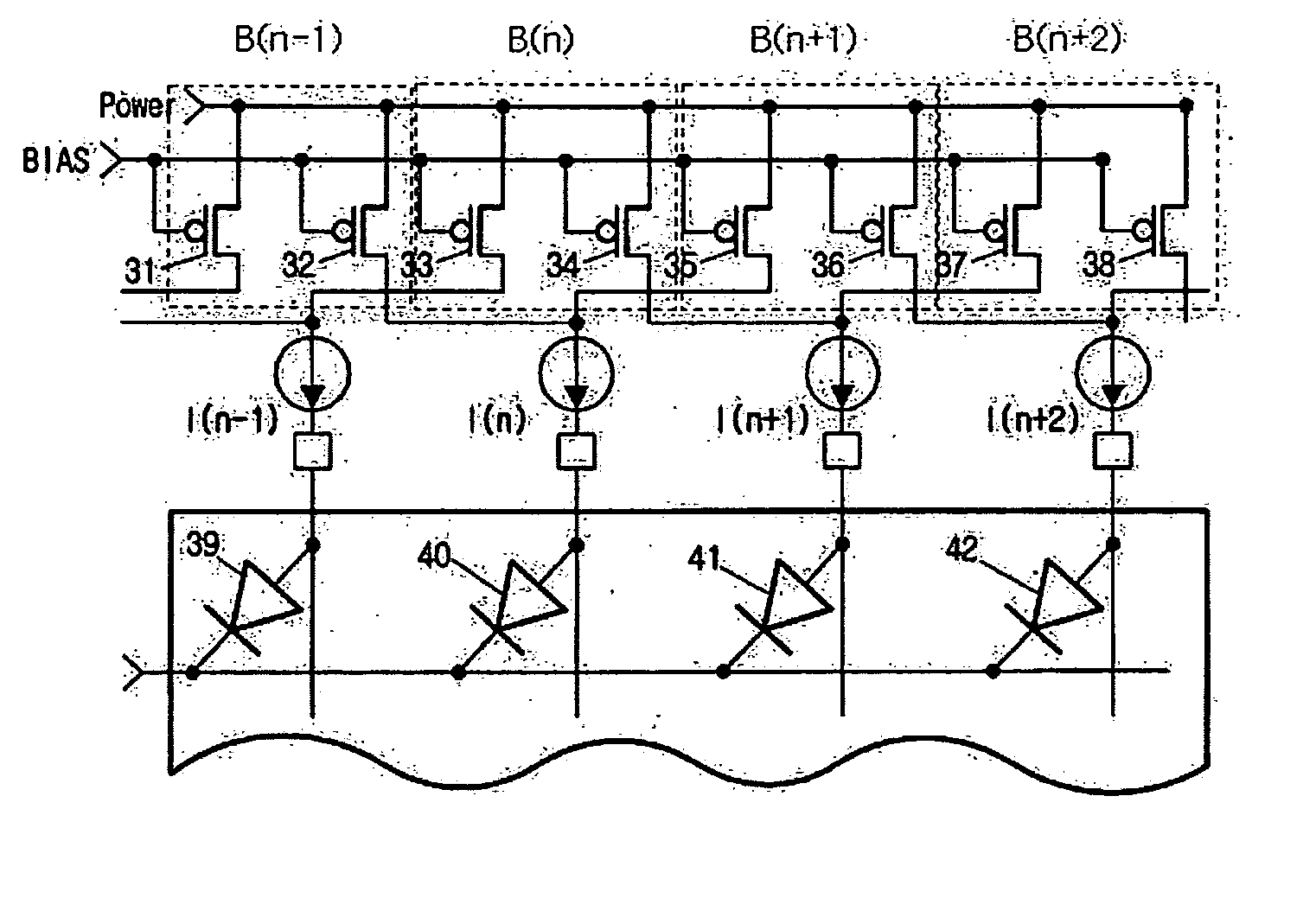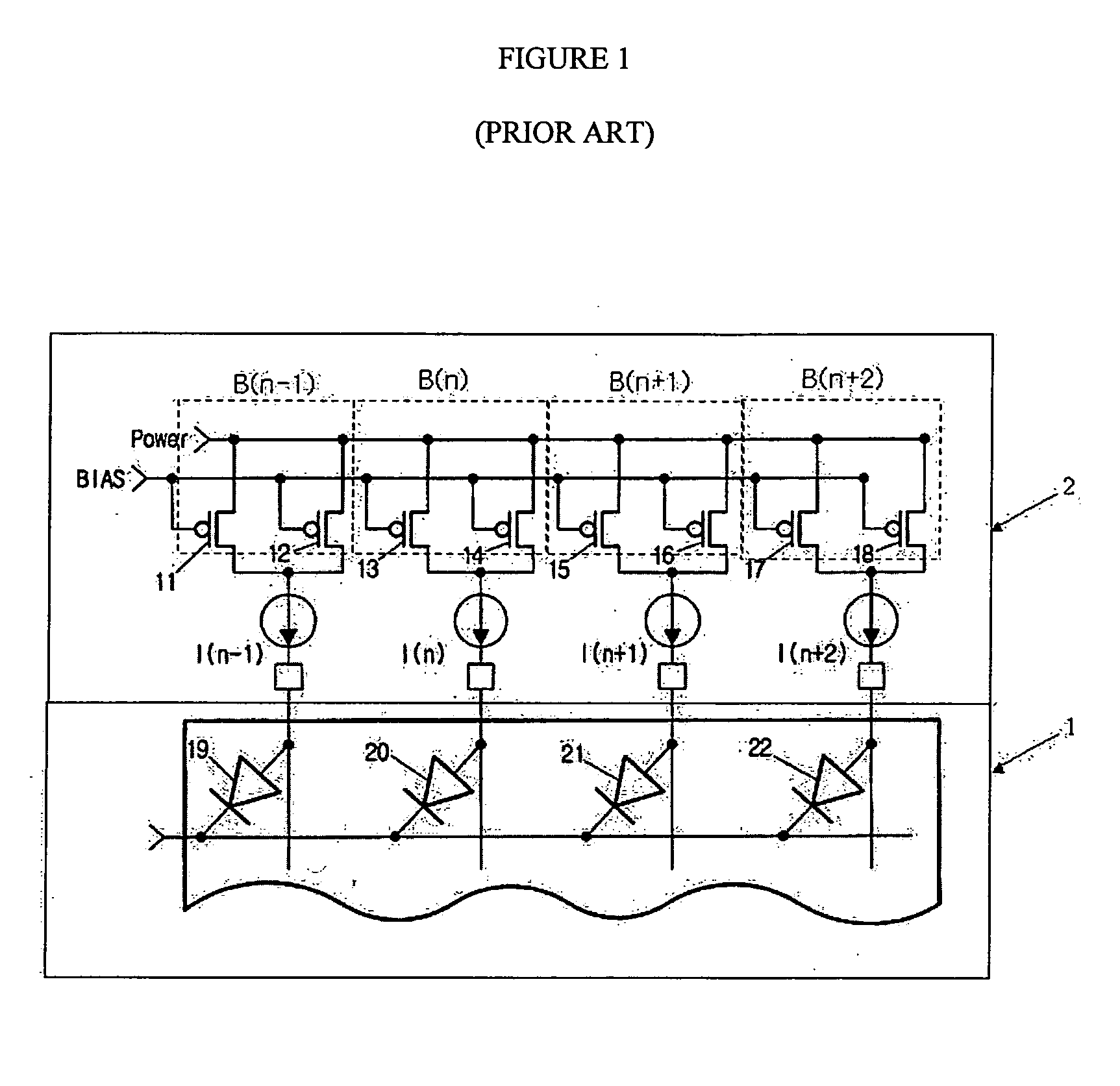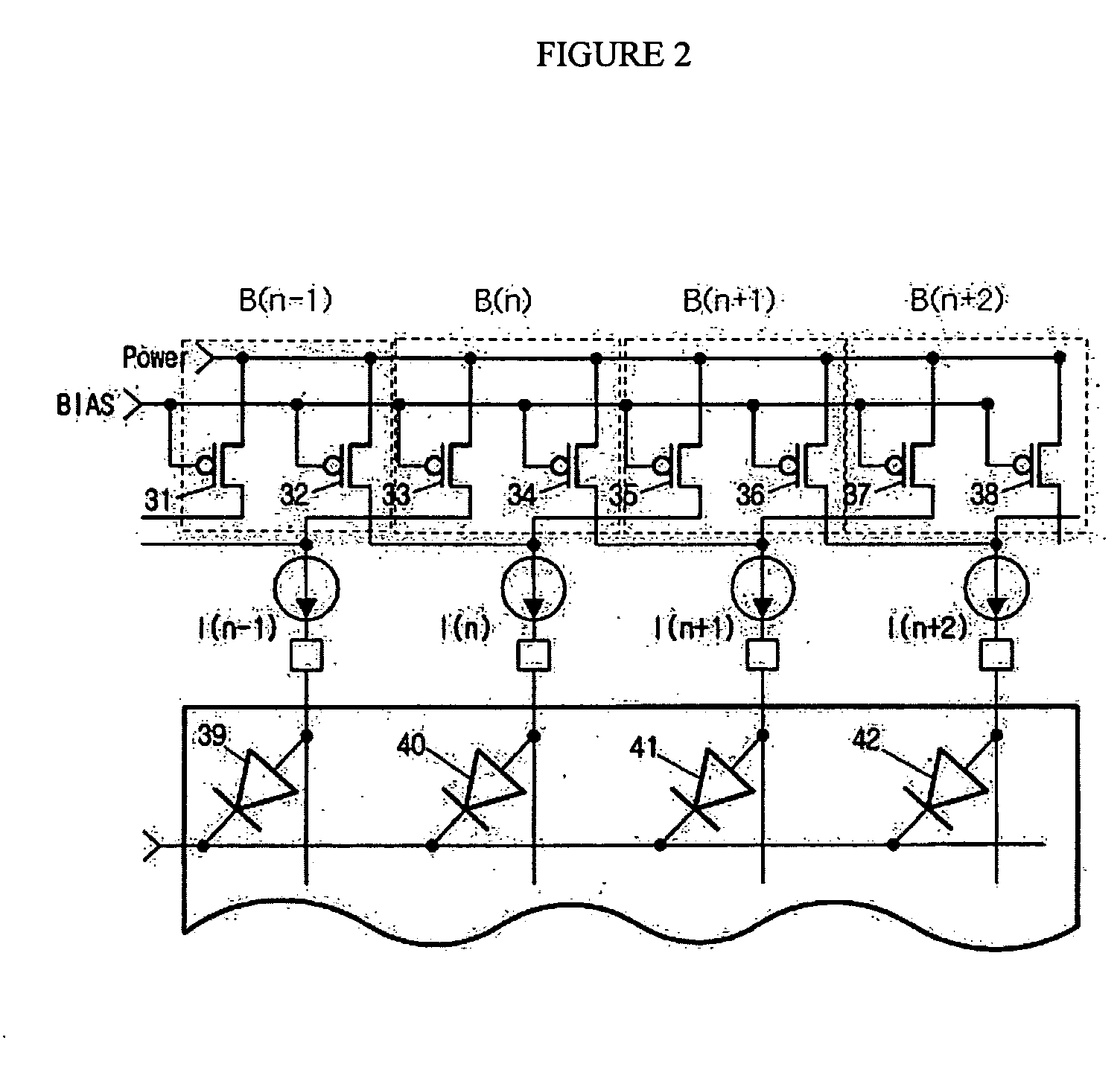Driving circuit for an organic electroluminescence display
a driving circuit and electroluminescence technology, applied in the direction of instruments, static indicating devices, etc., can solve the problems of degrading brightness uniformity, different current flowing out of different transistor groups, etc., and achieve the effect of reducing the variation of driving current flowing
- Summary
- Abstract
- Description
- Claims
- Application Information
AI Technical Summary
Benefits of technology
Problems solved by technology
Method used
Image
Examples
Embodiment Construction
[0019] A driving circuit of an organic electroluminescence (EL) display according to one embodiment of the present invention will be described in detail with reference to the accompanying drawings. However, the present invention is not limited to the following embodiments. It will be apparent to one of ordinary skill in the art that the present invention is applicable to driving circuits for both passive and active matrix organic electroluminescence (EL) displays.
[0020]FIG. 2 is a simplified diagram of a driving circuit of an organic electroluminescence (EL) display according to one embodiment of the present invention. The organic electroluminescence (EL) display includes diodes 39, 40, 41, 42 assigned for each pixel, and the diodes 39, 40, 41, 42 operate with current flowing out of transistors 31, 32, 33, 34, 35, 36, 37, 38 assigned for each pixel.
[0021] In one embodiment, the transistors 31, 32, 33, 34, 35, 36, 37, 38 are p-channel metal-oxide semiconductor (PMOS) transistors us...
PUM
 Login to View More
Login to View More Abstract
Description
Claims
Application Information
 Login to View More
Login to View More - R&D
- Intellectual Property
- Life Sciences
- Materials
- Tech Scout
- Unparalleled Data Quality
- Higher Quality Content
- 60% Fewer Hallucinations
Browse by: Latest US Patents, China's latest patents, Technical Efficacy Thesaurus, Application Domain, Technology Topic, Popular Technical Reports.
© 2025 PatSnap. All rights reserved.Legal|Privacy policy|Modern Slavery Act Transparency Statement|Sitemap|About US| Contact US: help@patsnap.com



